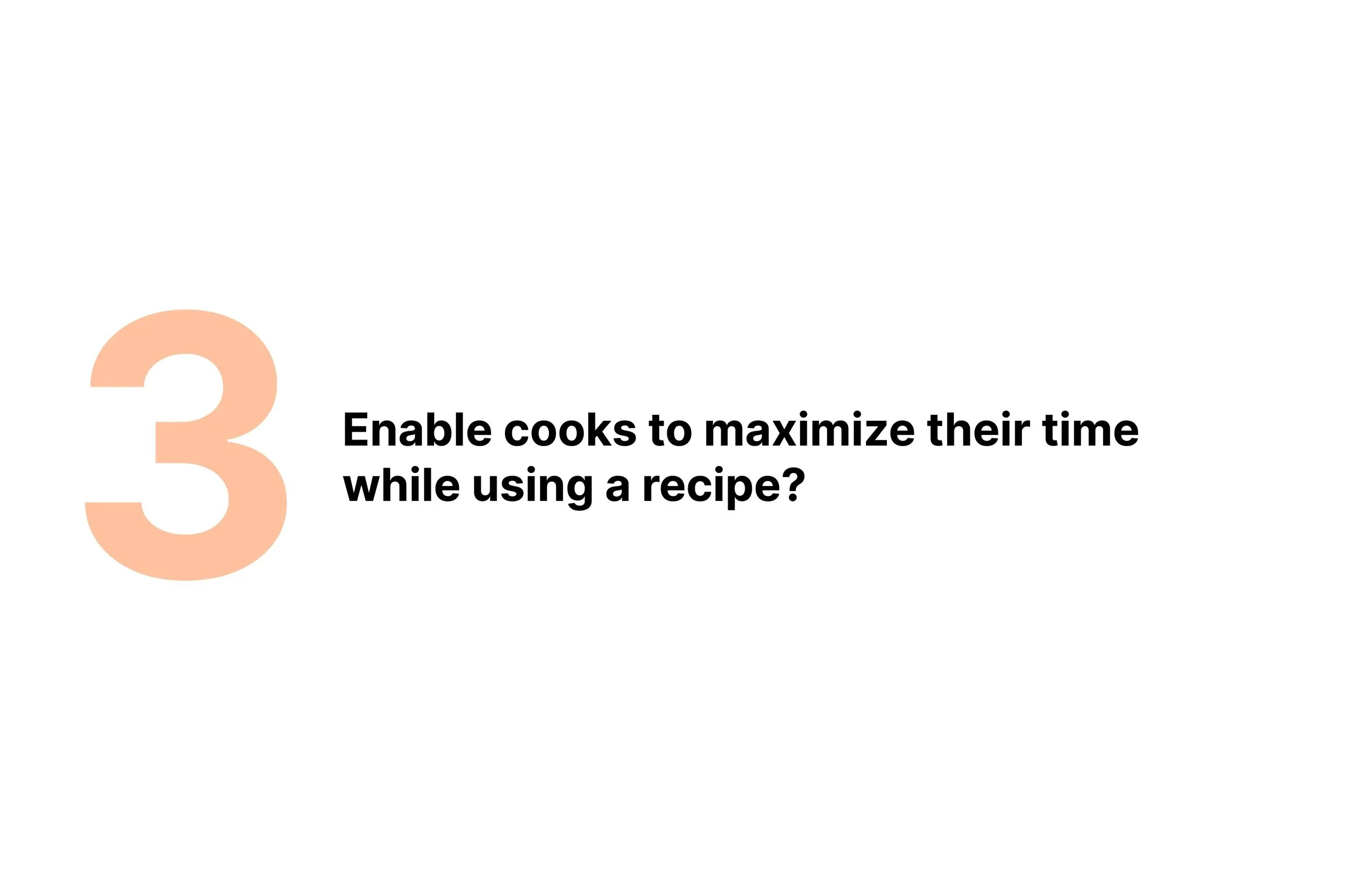
Responsibilities
Research
Sketching, Storyboarding, Wireframing, Prototyping
UI design + Iteration
Context
Design Sprint
Solo Project for Springboard UX/UI Bootcamp
Timeline
May 2022 - June 2022 (10 Days)
Context + Background
This case study is based on a UX problem provided by the Springboard UX/UI course and solved by the traditional sprint process to create a potential solution to the problem. Savr is a conceptual startup company that displays hundreds of recipes, and cooking tips for at-home-chefs. They have an active community of users who rate and review recipes for other users.
Challenge
Users feel that instructions are not easy to understand…
Recently, Savr has seen negative reviews about recipes that involve too many steps, or more advanced techniques. People end up disappointed with the outcome, because they didn't feel the instructions were clear, or easy to understand.
Constraints
Currently, recipes are written as text in ordered steps (list of items) from start to finish. The solution should be designed as a feature for the Savr recipes native mobile application.
Users have expressed positive feedback about finding quality recipes. Focus on creating a better experience for users when it’s time to cook their meals.
Solution
Touch-free cooking, and an easy-to-follow experience for the aspiring cook.
Day 1 | Understand
Starting at the end…
The goal that I wish to set for the Savr recipe application is to allow the user to have an easy-to-follow experience while preparing and cooking their meals. Currently, users are only able to look at a basic list of items and are expected to follow along leaving room for error.
Gaining a better perspective from the cook…
I analyzed a total of 6 remote user interviews provided to me by Savr. The Demographic consisted of people who cooked for a living, people who cooked for their families, people who cooked for themselves, and people who liked to experiment with new recipes on occasion.
A few highlights from the interviews…
What did I learn?
Synthesizing research data…
Gain Points
Having a way to proceed to the next step without constantly having to wash hands or dirty phone screens.
An easy-to-follow way to prepare and cook meals.
Participants expressed being able to see all of their steps during the cooking process to make sure they’re on track.
Pain Points
Not being fully prepared for their recipe, and messing up their meal.
Instructions from recipes not being clear.
Having to rush and try to prepare ingredients in a hurry.
Who are you solving for?
People who like trying new recipes, people who cook a few times a week, and people who prepare food for their families.
Understanding the current map...
How might we?
Day 2 & 3 | Sketch + Decide
Observing different solutions across the market…
I downloaded around 10 to 15 applications to gain a better understanding of how companies were solving problems for their users, and to also get inspiration, or remix existing ideas from potential competitors. Below are some of the experiences that I felt aligned best with the problem I was looking to solve which included: Pepper, Whisk, Tasty, Mealime, Flavor.
Visualization/Decision
Storyboard
I began by taking myself through my personas goals which was to follow a recipe easily and confidently while having an enjoyable experience cooking. These are the phases people typically go through while using a recipe application: Find recipe, Browse/or search recipes, select their recipe, add recipe to their menu, prepare/begin new recipe, complete recipe.
Day 4 | Prototype
I spent the entire day building a SAVR prototype in Figma. Due to the design sprint's short timeframe, I made sure to stick to my storyboard and prototype a functional mockup that showcased the primary features of SAVR and would allow me to quickly test out features and gather data. See a live demonstration of the application below:
Here is a link to my clickable prototype.
Day 5 | Test
I conducted five usability tests both remotely and in-person. The participants were selected based on their interest in cooking for themselves, significant others, and families.
The results
Iterations
Due to the nature of a design sprint, no iterations were made to the final prototype; however, there were some features that users had questions on or would’ve liked to see like a Siri voice recognition to walk through their recipes and implementing a functional checklist page to guarantee they had all ingredients for their meal.
Takeaways
This solo design sprint was a great learning experience because it forced me to move quickly instead of spending too much time overthinking design decisions. The ability to sketch quickly and not judge initial ideas is a valuable skill that I hope to continue to grow. The user feedback that I received motivated me to iterate my design in the future and think about small details that could make a great impact. Overall, I am content with the result of my design sprint as I solved SAVR’s challenge as well as the users’ goals in just one week.
Measuring Success
Task completion rate. Some of the metrics I would use to measure this applications success would be the applications high task completion rate, and low time on each task.
Engagement. Gauging the excitement expressed by participants while using the application, I would also measure success based on the desirability of the product.
Net Promotor Score (NPS). I would also measure success by user satisfaction with the application and their willingness to share the company’s product to others based on positive feedback.
Thank you for reading!
For more work inquiries do email me at xmcgriffux@gmail.com






























